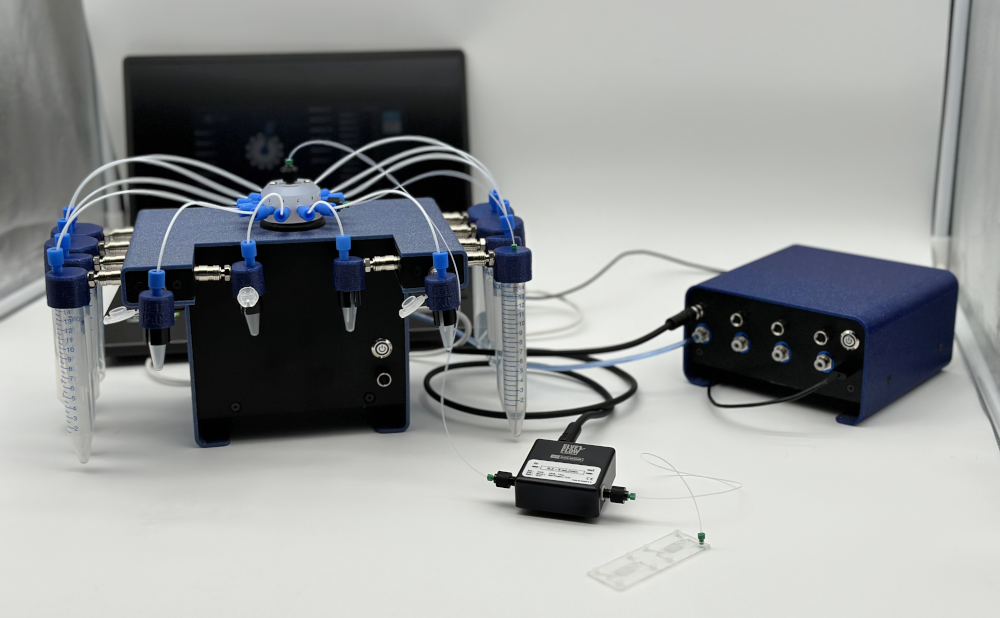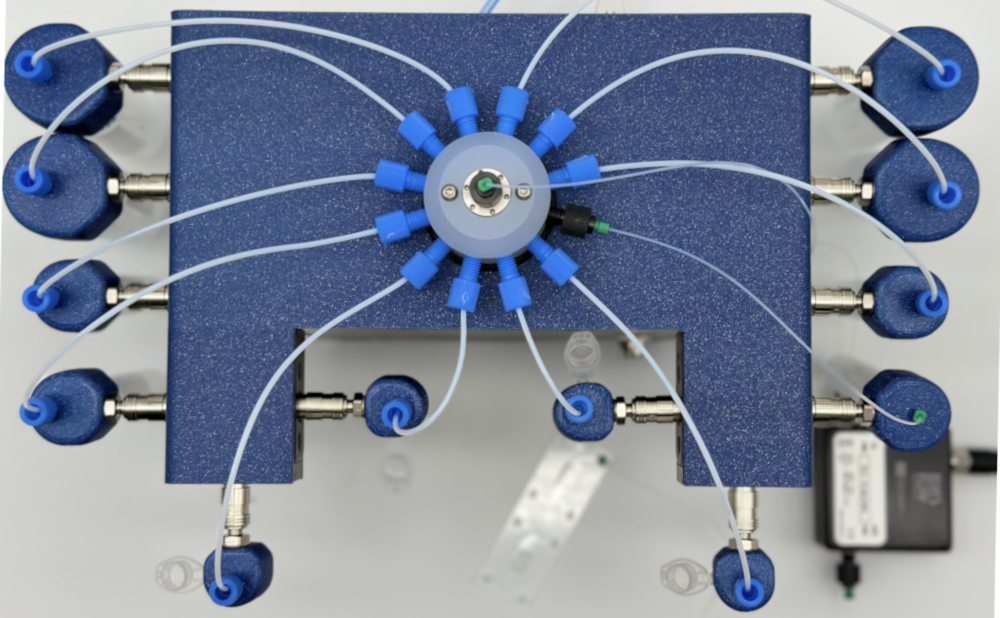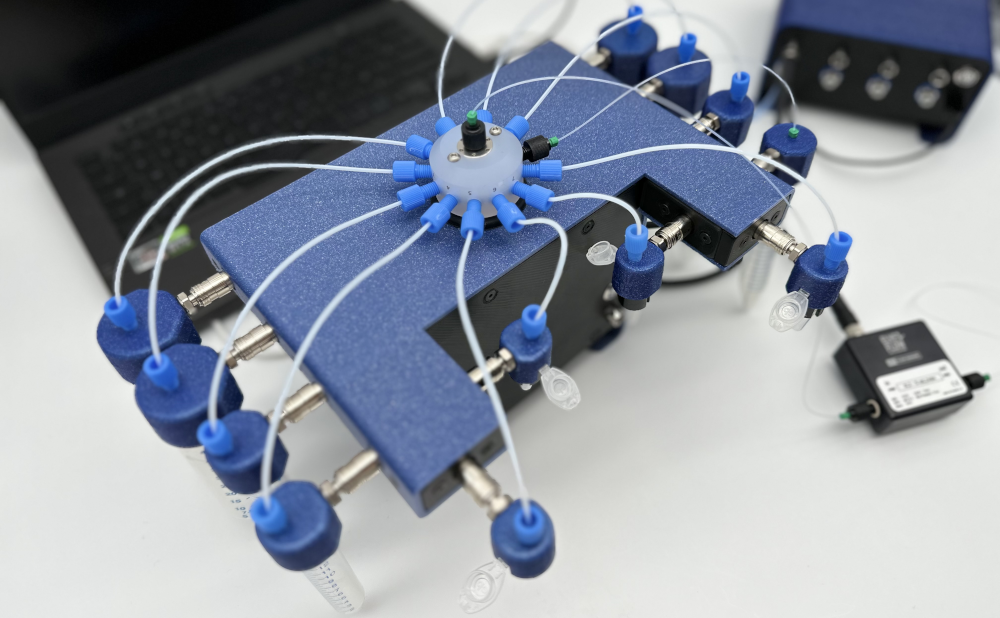Multiple Drug Injection
Streamline your experiments with our multiple drug injection device
Fast & reproducible drug injection
Several replicates can be done in the same experiment
Compact design
No need for bench space or complicated installation procedures
Automated liquid handlig
Avoid errors due to manual handling

Need a microfluidic SME partner for your Horizon Europe project?
Sequential injection device for multiple drug injection
Microfluidic devices, known for their ability to use very small sample quantities, have gained attention for their precise drug injection capabilities in various applications. Compared to conventional techniques, microfluidics provides benefits like real-time process monitoring and precise control over drug injection rates.
In addition, laminar flow is a key feature of microfluidic devices, allowing for precise control over drug concentration in temporal and spatial dimensions. The predictable fluid behavior at the microscale makes efficient drug injection possible. Injection robots with pipetting arms have been developed for automated and parallelized multi-injection. However, a major concern remains these robots’ large size and lack of adaptation to underflow systems.
To address these challenges while leveraging the aforementioned features, we developed a sequential injection device for multiple drug injection.
It allows for the simultaneous administration of different drugs, with precise control over the timing and concentration of each drug. The device is much smaller and accessible than its alternatives and can be used in underflow systems.

Fast and reproducible drug injection
Our device is user-friendly, with a quick reservoir connection and a simple interface that makes it easy and fast to set up and operate. You can plug 50 ml, 15 ml, and 1,5 ml reservoirs simultaneously on the same device and inject up to 12 different drugs in a sequence. Moreover, several replicates can be done in the same experiment, which decreases the variability and increases the reproducibility of the results.
Compact design
The distribution valve features a compact and space-saving design, making it ideal for laboratories with limited bench space. The modular design also enables researchers to customize the device to suit their experimental needs. Connecting up to 12 reservoirs allows you to eliminate a dozen pneumatic lines and holders, simplifying your experiment and making space on your lab table.
Automated liquid handling
Our sequential injection device uses a distribution valve linked to a pressure regulator to automate sample processing. The automated liquid handling reduces the time and effort required for manual sample handling, eliminating the risk of human errors. Consequently, the device provides consistent results, reducing the need to repeat experiments.

Applications of the sequential injection device for drug injection
Our multiple drug injection device is suitable for the following applications:
Proteins, peptides, and DNA-based drugs: the fast and easy injection of proteins, peptides, and DNA-based drugs, which are at risk of early deactivation when they are subjected to time-consuming, multistep processes.
Targeted Drug Delivery: by designing drugs in nanoparticles, multiple drugs can be delivered directly to specific cells/tissues, enhancing therapeutic outcomes and reducing systemic side effects.
Combination Therapy: the precise delivery of multiple drugs in specific sequences and dosages, for optimized combination therapies with minimal side effects.
Personalized Medicine: customization of patient-specific drug delivery profiles based on individual needs and disease states and monitoring real-time treatment responses.

Other applications of the sequential injection device
Our sequential injection device can be used for sampling for various other applications:
Clinical & biomedical: Seq Fish, DNA-paint, Forensic analysis.
Biology: Cell culture analysis, Fermentation monitoring, Microbial analysis, Bioprocess monitoring.
Chemistry: Chemical process control, Biofuel analysis, Petroleum analysis.
Environmental monitoring: Water quality analysis, Soil analysis, Environmental toxicology.
In industries: Food quality control, Pharmaceutical analysis.
Customize your pack
Our instruments can be added to highly customizable setups, so you can take advantage of the extra flexibility to adapt them depending on your specific needs. Our microfluidic specialists will advise you on the best instruments and accessories depending on your needs and will accompany you during the setup of the microfluidic platform.
Our instruments are compatible with standard commercialized chips from different brands.




